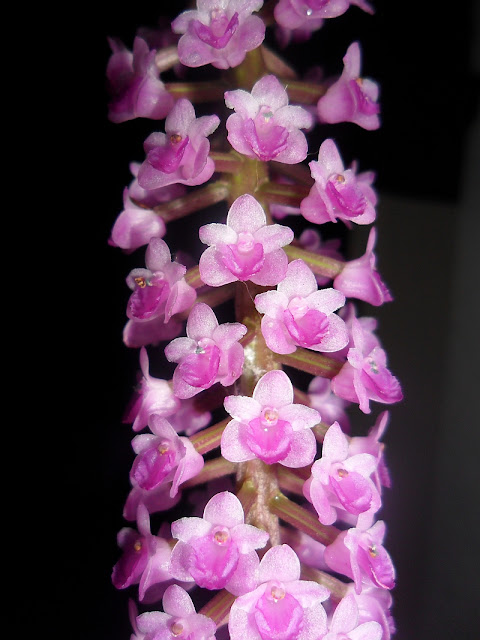Follow-up so far (18 December 2012)
Although absolutely no response from the Overberg Municipality was received to date (since 25 October 2012), the letter was handed to the mayoress of our region yesterday at a meeting of the Rate-Payers Association. I am sure that we can expect a formal response in due course from the Overberg Municipality...
The following letter with the subject line "Complaint: Satyrium carneum and municipal mowing" was emailed to the Gansbaai office of the Overberg Municipality this afternoon (25 October 2012). I await their response, which I will also publish here.
"Dear Sir/Madam
I am writing to you to find resolution for the serious
concern that I have regarding the destruction of the flowering Satyrium
carneum (Orchidaceae), an IUCN endangered species listed South African
rare, endemic geophyte in the servitude of public open space entering the town
of Gansbaai on either side of the roadway (with specific reference to the
recently mowed seaward-facing side).
The Overstrand Plot Clearing Policy is clear in its purpose
and its responsibilities, indicating amongst others that the authorised
officials of the local municipality have the final decision in when and how a
plot of land is cleared. However, The National Heritage Resources Act (Act no.
25 of 1999) requires local authorities to compile inventories of heritage resources
within their area of jurisdiction. The Overstrand Municipality has appointed
the Overstrand Heritage Landscape Group to compile such an inventory and to
grade heritage resources in terms of the criteria identified in the Act. The
Act identifies that the heritage resources of South Africa which are of
cultural significance or other special value for the present community and for
future generations must be considered part of the national estate and fall
within the sphere of operations of heritage resources authorities. The Act
specifies a place or object is to be considered part of the national estate if
it has cultural significance or other special value because of (not limited to)
its possession of uncommon, rare or endangered aspects of South Africa’s
natural or cultural heritage. Our endemic and endangered species therefore must
form part of our natural heritage.
The area of land mentioned above contains an incredible
concentration of the endangered species S. carneum. This species is in
full flower at this time in the area and is pollinated by sunbirds. The plant
dries out shortly after flowering, allowing the dispersal of seeds by wind. The
plant then remains dormant underground in the form of a tuber which gives rise
to subsequent growth in the following season. The mowing of the servitude
before the plants have had opportunity to set viable seeds to further future
generations is ignorant and irresponsible and jeopardises the viable continuity
of this local colony. Additionally, the National Environmental Management:
Biodiversity Act, Act 10, 2004 defines a “threatening process” as “a process
which threatens, or may threaten- (a) the survival, abundance or evolutionary
development of an indigenous species; (b) the ecological integrity of an ecosystem”
and states that “a municipality must adopt an integrated development plan in
terms of the Local Government: Municipal Systems Act, 2000 (Act No. 32 of
2000), and take into account the need for the protection of listed ecosystems.”
Further to this, no person may carry out a restricted activity involving a
specimen of a listed threatened or protected species without a permit issued in
terms of Chapter 7 of the National Environmental Management: Biodiversity Act.
Restricted activity includes (but is not limited to) “picking parts of, or
cutting, chopping off, uprooting, damaging or destroying, any specimen of a
listed threatened or protected species.”
It is obvious that there is conflict here. However, it
should be remembered that in the event of any conflict between a section of the
National Environmental Management: Biodiversity Act and a municipal by-law, the
section of the Act prevails.
Therefore, I would like to exercise my right to freedom of
information and request firstly to view your (and/or contractor’s) permit
issued under Chapter 7 of the National Environmental Management: Biodiversity
Act to undertake the restricted process of mowing on this land, and I would
like to request a copy of your integrated development plan highlighting the
listed protected ecosystems in the area. In addition, I would like to discuss a
remedial plan to conserve these (and other) endangered plant species by the
simple integration of protocols to avoid future problems as indicated above.
I look forward to hearing from you."



















































